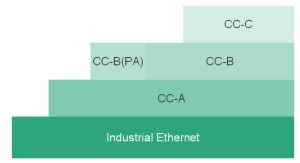In this tech tip, we want to explain to you how PROFINET can further help in your project or product planning. Not only is PROFINET the leading Industrial Ethernet standard, another advantage of PROFINET is that it has class, in fact, many classes: conformance classes, real time classes, media redundancy classes and even more class(es).
We know it sounds complicated, but it’s really easy once you start looking at the modular  design of the protocol, available functions and services, and making selections for your applications and products. This article will cover conformance classes and we’ll take up the other classes in future articles.
design of the protocol, available functions and services, and making selections for your applications and products. This article will cover conformance classes and we’ll take up the other classes in future articles.
PROFINET conformance classes make it simpler to evaluate what device or controller functions are available for the target application by users. And this helps guide you in the product selection process when it comes to picking the products and talking with the vendors (visit PI’s online product guide). For product managers or developers conformance classes help determine which requirements and functions must be met or are necessary in order to release the product to the intended market space. For example, what testing is required for device certification or what services are required (or optional) for a certain application or industry (for example, a process application in a chemical plant). The  conformance classes are divided into three categories, class A, B, and C. Conformance Class A (CC-A) is the most basic while C (CC-C) is the most advanced. It should be noted that they build upon each other.
conformance classes are divided into three categories, class A, B, and C. Conformance Class A (CC-A) is the most basic while C (CC-C) is the most advanced. It should be noted that they build upon each other.
In Figure 2, you can also see an overview of what functions are necessary for each conformance class. Optional services and functions are available too and further details can be found in the conformance classes document at profibus.com.
. 
Next issue, we’ll explore PROFINET’s real time classes.
–from the PROFI Interface Center in Tennessee where all these classes are explained in class – the PROFINET Certified Network Engineer class: www.PNclass.info
